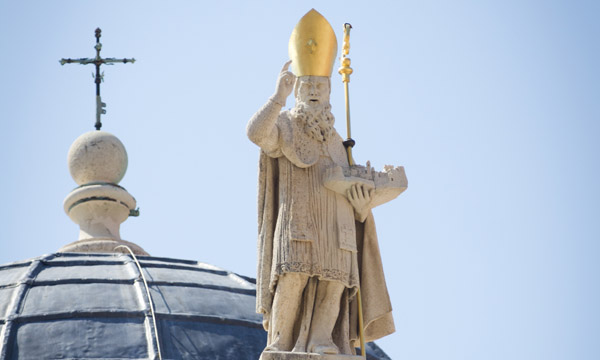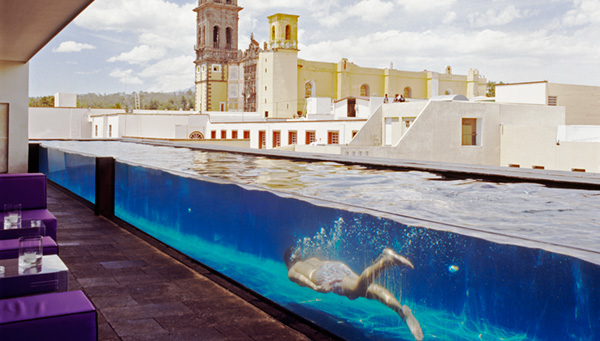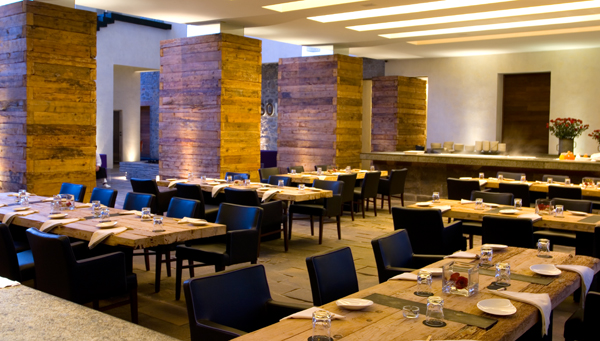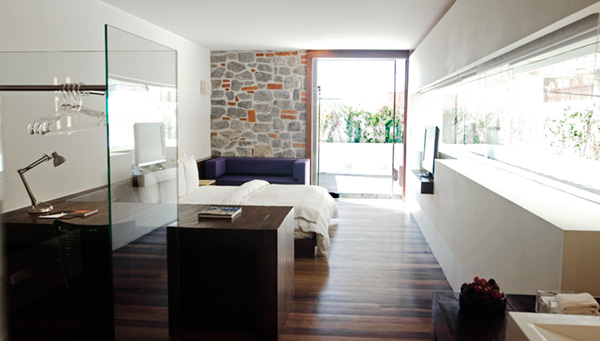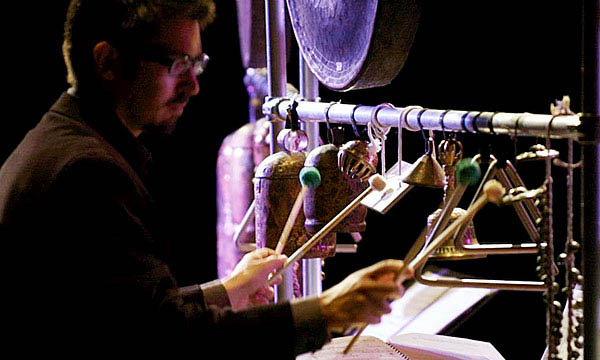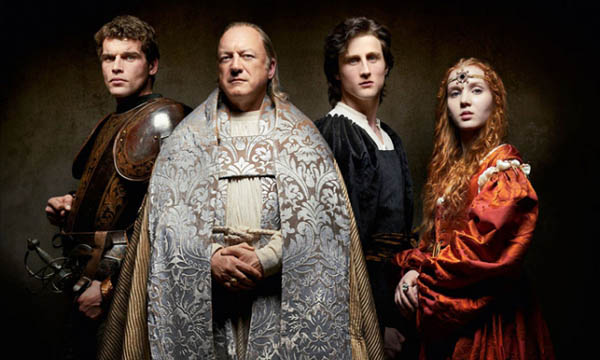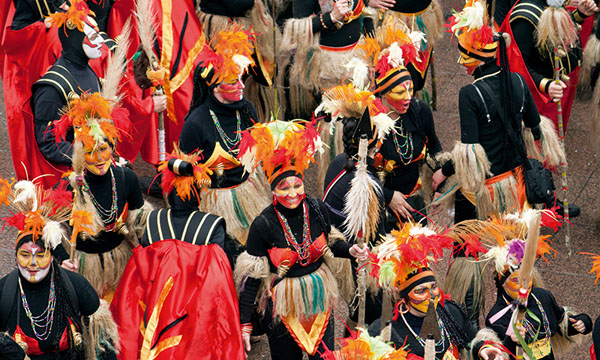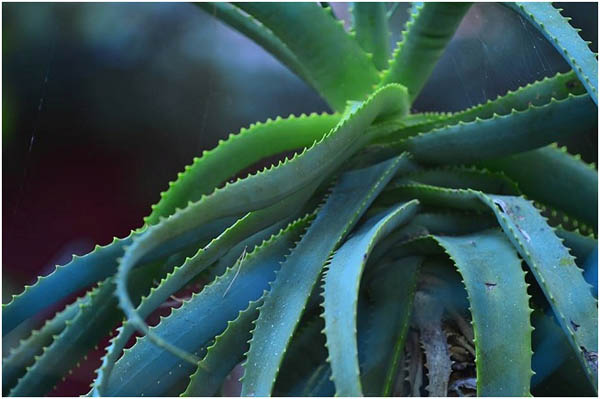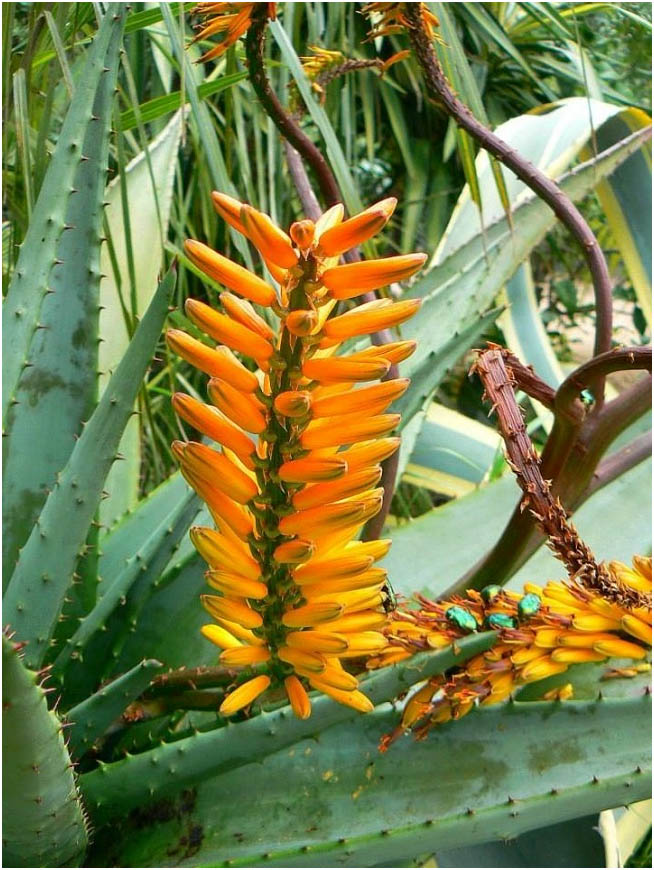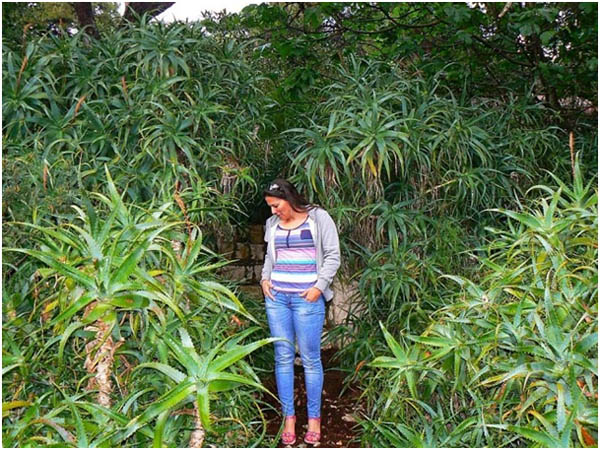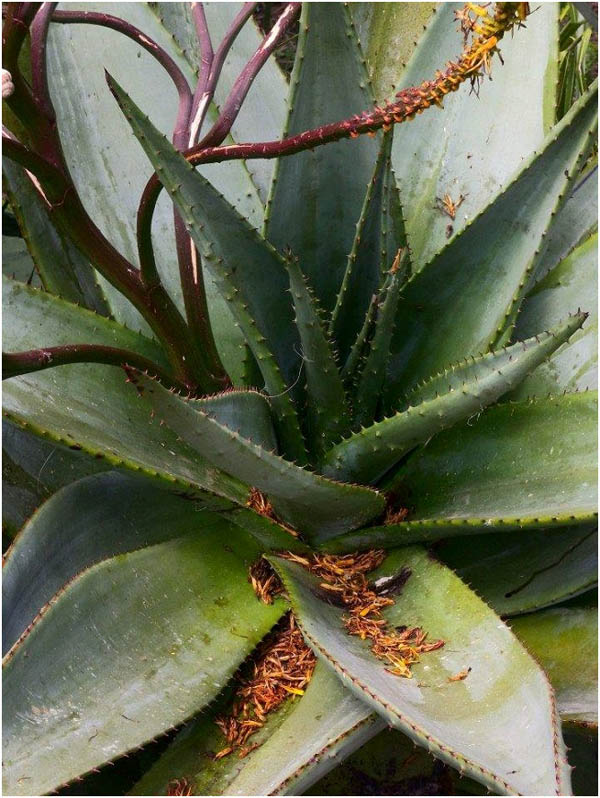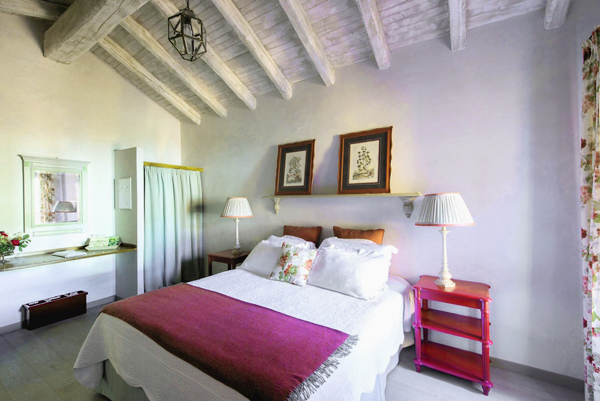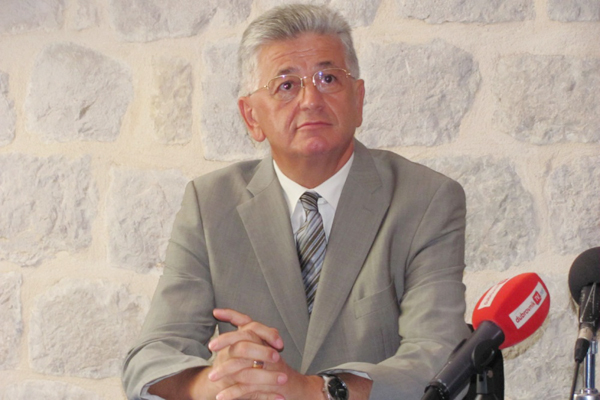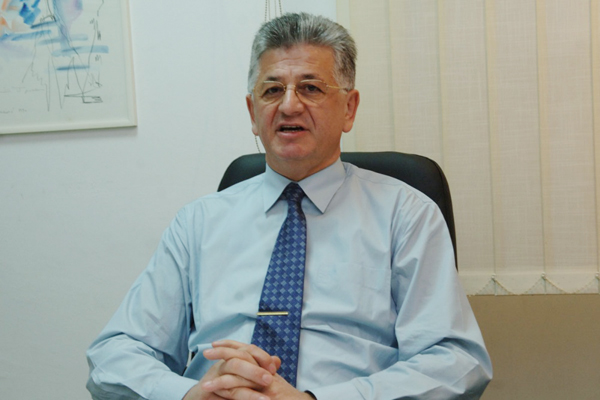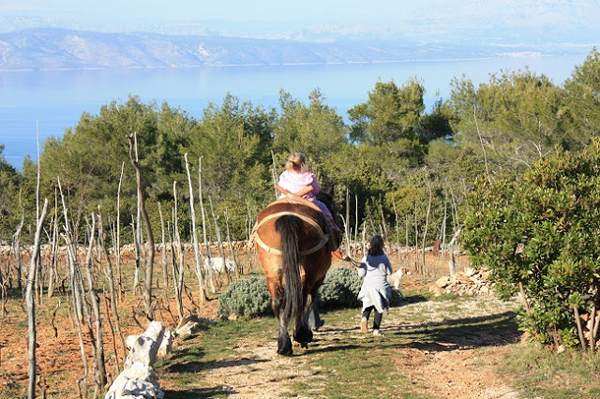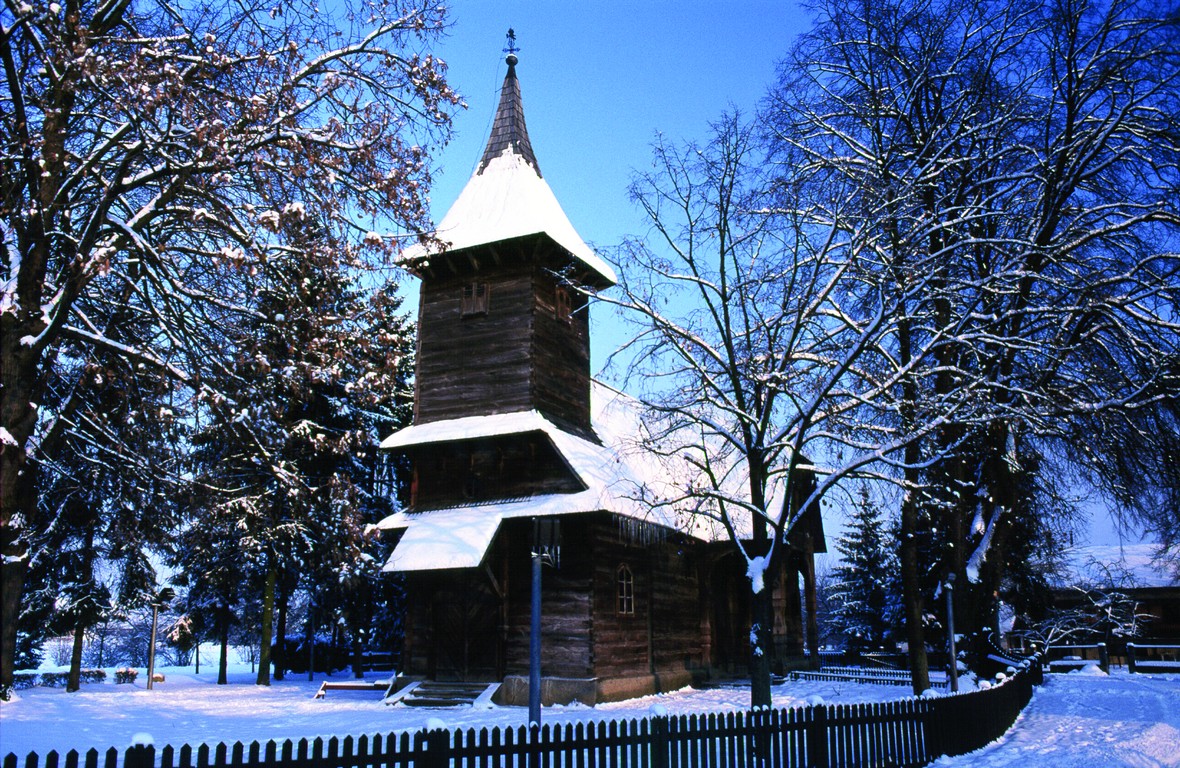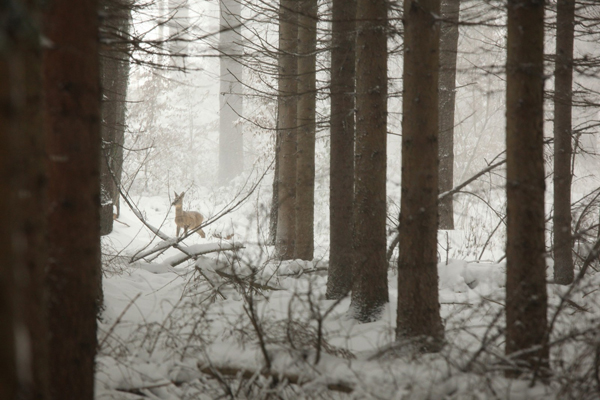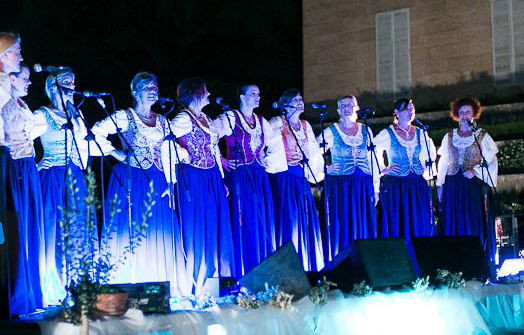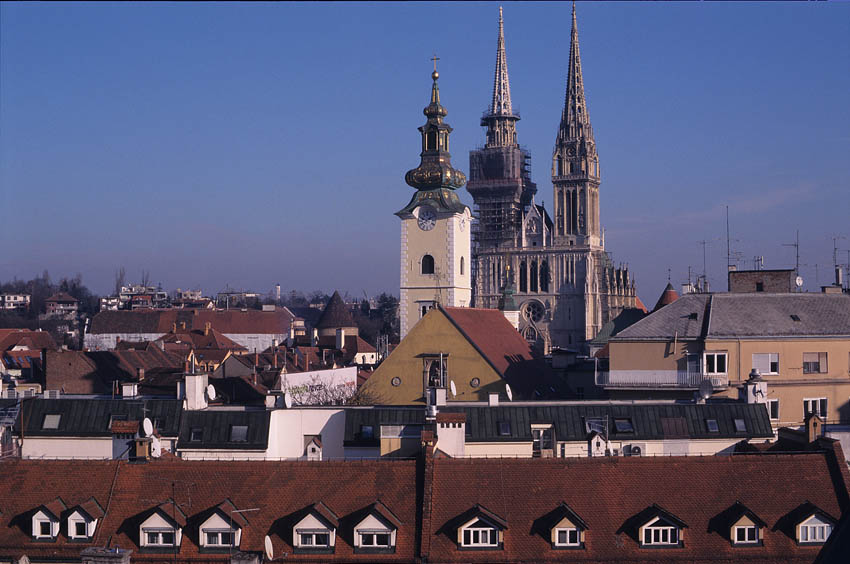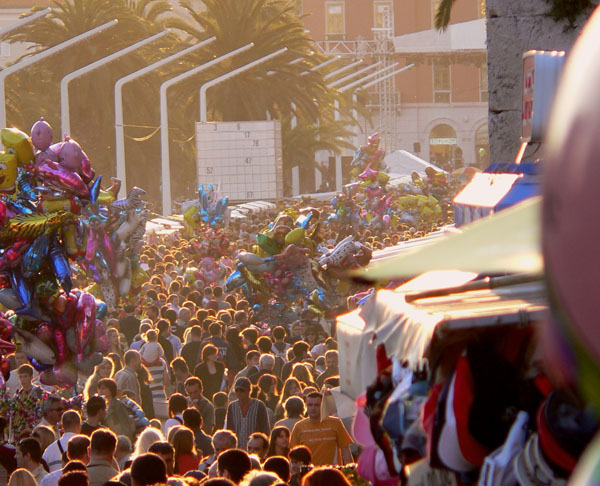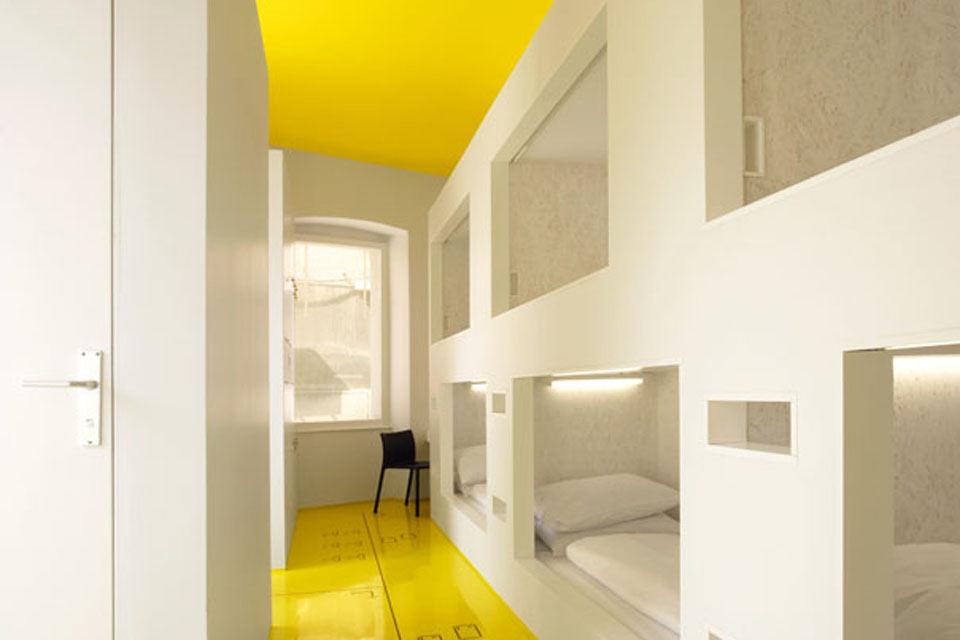Saint Blaise festivity - Dubrovnik’s Day
|
|
||
| The day that is dedicated to Dubrovnik’s patron saint, Saint Blaise, an old man who carries the City in the palm of his hand and whose statues decorate city walls and entrances, has been a special day for the City of Dubrovnik since 972 when it was celebrated for the first time. |
|
|
| This year, for 1042nd time, Dubrovnik will again honour its patron saint with a traditional festivity, which was made a part of UNESCO’s register of intangible heritage in 2009. This traditional celebration starts on the day of Our Lady of Candelora, February 2, with the releasing of white doves, which symbolize freedom and peace, in front of a church dedicated to the saint and by raising Saint Blaise’s banner on Orlando’s column. Apart from the religious festivities in Dubrovnik, during those days numerous secular activities have been organized for domestic residents and tourists alike. Restaurants offer typical winter delicacies and you can enjoy many exhibits and concerts dedicated to Saint Blaise, and during a walk on city walls you can see over a hundred stone depictions of Dubrovnik’s patron saint.
It is hard to decide what is more beautiful and attractive on Saint Blaise’s day. Folk costumes of Croatian Littoral region, Župa dubrovačka or Konavle, all evoke the times of folk customs. Colourful red banners catch the eye as they flutter on the square behind Orlando, and we are mesmerized as well by a group of trombunjeri who carry short and broad rifles on their shoulders which had been used in the past to create noise and frighten away enemies of the City. They fire their guns before entering the City, on Brsalje, where, during the time of the Republic, shooting rifles and cannons was practiced. In the evening, when darkness envelops the City, and saints relics are resting in the treasury, guests from surrounding villages return home. Green laurel wreaths decorate the front of the beautiful baroque entrance into the saint’s church, stained-glass windows shine on the façade and statues of Saint Blaise, a saint who for centuries has been holding a model of the City in his outstretched hand, as if trying to bring the City closer to his heart and protective embrace, gazes down at the passers-by from the city walls, lavish buildings and churches. In over one thousand years since the City under Srđ started celebrating its patron saint, not much has changed. True, Dubrovnik no longer has its Rector or nobility, but the beautiful stone Rector’s Palace is still here, as well as the baroque St. Blaise’s Church adjacent to it, a baroque cathedral which represents the most important and enduring commitment of Dubrovnik inhabitants to their patron saint. This year, for the 1042nd time, Dubrovnik will again treat its patron saint with a traditional festivity which was made a part of UNESCO’s register of intangible heritage in 2009. The traditional celebration starts on the day of Our Lady of Candelora, February 2, with the releasing of white doves, which symbolizes freedom and peace, in front of a church dedicated to the saint and by raising Saint Blaise’s banner on Orlando’s column. Each year on February 2, when Dubrovnik celebrates Our Lady of Candelora, people repeat the old dictum: “Candelora, winter goodbye, Saint Blaise follows her and says it is a lie.” Truly, on that day, when continental cities are drenched in torrential rain and the rest of Europe is often caked in ice, Dubrovnik is full of mimosas, almonds in full bloom and sunny spring days. On the day of the festivity itself, February 3, the numerous faithful and church dignitaries come to the City from nearby areas carrying the saint’s relics across Stradun and city streets in a solemn procession, and under a baldachin is the greatest of all relics, the shroud of Jesus. Throughout the day, priests bless the faithful in the church, using two crossed candles since it is believed that Saint Blaise protects against throat diseases. The Saint Blaise festivity is also the Day of the City of Dubrovnik, which is why apart from religious ceremonies these days are rich in various activities. During the solemn session of the City Council, which is organized in Dubrovnik’s baroque Marin Držić Theatre, an award from the City is presented. Many diplomats, businessmen and political dignitaries from Croatia and throughout Europe visit Dubrovnik during this period. As a part of Dubrovnik’s tradition, all of them are invited to a festive dinner, called ‘Candelora Dinner, held in Revelin Fort, where Dubrovnik delicacies are served, such as šporki makaruli (literally translated as “dirty macaroni,” a traditional dish made of pasta and meat sauce) and doughnuts. Numerous religious and secular activities, exhibits, book presentations, theatrical plays etc., are dedicated to Dubrovnik’s patron saint during those days. The day dedicated to Dubrovnik’s patron saint, Saint Blaise, an old man who carries the City in the palm of his hand and whose statues decorate Dubrovnik city walls and entrances, has been a special day in Dubrovnik since 972 when it was first celebrated. The celebration is unique in itself, typical for Dubrovnik.Izvor: visit.dubrovnik.hr |
One of the most beautiful design - boutique hotel in the world
LA PURIFICADORA MEXICO
Innovative Mexican hotelier Carlos Couturier’s latest project is an inland wonder, a former 19th-century water-purifying centre next to the Iglesia de San Francisco in the colonial city of Puebla.

Purity is the guiding principle of the hotel’s design as executed by renowned architects Ricardo Legorreta and his son Victor: black and white are the only colours, bringing out the subtleties of the materials used – stone from the original building, old wood, onyx and custom floor tile, as well as found materials such as bottles and glass fragments, which are also integrated in the hotel’s graphic design.

But this minimalism shouldn’t be confused with lack of luxury: a roof terrace and 30-metre pool provide ample recreational opportunity, and the 26 guestrooms offer spectacular views of the city, a UNESCO World Heritage Site.
A ground-floor restaurant, patio, library and extensive wine cellar offer civilized diversions, but La Purificadora's real achievement is in its mix of tradition and contemporary flavour, giving Puebla a hotel to savour on the road from Mexico City to Oaxaca.
La Purificadora is located in the historic centre of Puebla, a colonial city on the road between Mexico City and Oaxaca.
International Percussionist Week
16 January 2014 - 18 January 2014
Visit Carnival in Rijeka
17 January 2014 - 05 March 2014
A tradition reaching down the centuries to ancient times when ferocious masks, so legends tell us, banished the forces of evil through hilarious rejoicing, has turned Rijeka into the Carnival Capital of Croatia. Throughout the carnival days the city gates are firmly closed to any solemnity and soberness, and are wide open to colourful and carefree merrymaking. It will be no different this year. Once the keys of the city are handed over, the carnival revelry will sweep the streets and all those who happen to be in Rijeka. The sea of masks, which allow their wearers to forget their sorrows, at least for a moment, will spread good humour for days, while the climax of the Carnival comes on its closing day when the grand parade - known as the International Carnival Parade - makes its thunderous way across the city.
Watch VIDEO
Contact
Aloe - mother nature´ heart
BLOG BY PAUL BRADBURY
One of the biggest surprises on the Pakleni Islands is the fascinating arboretum at Meneghllo's at Palmižana, a true treasure of exotic plant life, some from faraway lands, some much more local.
Among the amazing things one can find is an abundance of aloe, a healthy and medicinal plant. But aloe was not always on Palmizana. A fascinating account about a fascinating plant by Dagmar Meneghello:
ALOE – MOTHER NATURE’ HEART
In the days of fast foods, plasterboard houses and synthetic clothing , which of us does not long to return to a more natural way of life? No longer a back–to-nature fad but a growing phillosophy, this wish to put nature back in our lives applies above all to those two most important of human concerns: getting healthy and staying healthy.
Gardens in Dalmatia are green, especially in its warm regions as on our Island Hvar.
In spite of the cold northern wind some plants from the tropics which have successfully adapted to our circumstances are now blooming - blooming in the rhythm of their distant homeland.
One of those plants is the Aloe. This ancient medicinal plant in the world has long been utilized in medicinal and pharmaceutical production.
For over 3500 years, tales of “healing Aloe” plants have been handed down through centuries by word of mouth. From the Bible’s mention of removing Christ from the cross and wrapping his body in aloes and myrrh/John 19:39/ we find Aloe mysteriosly appearing in every phase of history, with many testimonials to its great medicinal values. The earliest documented use of Aloe comes from the ancient Egyptians, but it was also grown and used by King Solomon, who was said to have valued it highly. Cleopatra's secret beauty came from using the aloe plant.
Alexander the Great connquered the island of Socotra in order to have the Aloe for his army. During his fabled travels in the Orient, among the many marvels recorded by Marko Polo were his descriptions of the many applications of the Aloe plant. The Spanish Conquistadors discovered various herbal medicines in use in Tenochtitlan, Mexico. At the heart of many of the Aztec cures, it is known that Aloe was an effective agent. These Aztec herbal medicines were transported back to Europe by the Spanish during the sixteenth century, where they became the foundation for modern Western medicine.
Aloe gel is a most ingenious mixture of an antibiotic, an astrigent coagulating agent, a pain inhibitor and a growth stimulator, also called a “wood hormone” whose function is to accelerate the healing of injured surfaces. It is used for pain relief and healing of haemorrhoids, applied externally and internally. Aloe-based pharmaceutical products are used to control yeast infections.
Aloe is effective for sunburn, scratches, cuts and as a cleansing agent for the body or skin. It is an aid to growing new tissue and alleviating the advance of skin cancer caused by the sun. It is a treatment for ringworm, boils, inflamed joints, scalds, itchy allergic conditions, insect stings and bites. It creates a definite softening of the skin, relief from dry or sensitive skin and skin diseases. Dentists and oral surgeons employ Aloe Gel for surgery, swift healing, relief of pain and other oral treatments, including mouth ulcers, fever blisters, cold sores and cancers.
The Aloe is believed to improve digestion and assimilation of food eaten, so that elimination is naturally normalised. The concept is in accordance with the Chinese or Asian philosophy or medicine and goes back more than 5000 years in their history.
Not all types of aloe are useful in medicine. The most used are aloe arborescens, aloe vera, and aloe ferox.
The largest and oldest aloe garden in Croatia is in the Arboretum Meneghello in Palmižana on the island of St. Clement.
DAGHMAR MENEHGELLO
When I arrived at Palmižana nearly 50 years ago, the beautiful garden from 1906 was very rusty. The Communist State took away almost all the land. In communism other people's labor was not allowed, or help. My husband George Toto Meneghello cared desperately for survival, that his home should not perish. With his old mother he still led a life of tourism and agriculture and animal husbandry. For the flowers there was no time.
Cacti, yuccas, palms, pines and other Mediterranean trees grow alone without human help.. . They survived and developed incredible gigantic forms. Flowers, ornamental shrubs were disappearing. The surrounding environment went wild.
I had never dealt with a garden. I was a city kid and worked as a journalist. However Palmižana looked at that time for me sad and abandoned. At night you had the feeling that the desperate and unfortunate Professor Eugen's soul was wandering around the garden and island
At the end of the Sixties i saw in one posh villa in Hvar a few small pots of a very beautiful green plant. I asked the lady, I think her name was Herta, but that isn’t important for our story, if she could give me a piece of plant for planting. Nurseries did not exist at that time. We planted by taking pieces of the plants "pelcer" from neighbors or " smuggled " small plants and seeds from abroad.
She told me that she was ready to sell - “ It is an Aloe arboscenses – “ she said - and uttered such a price - at the time unthinkable - that I immediately gave up on buying. Aloes as a plant was in that time unknown for me..
My husband bought me a plant for my 25th birthday, I am 70 now.
Really I was not happy with my gift. It was questionable if the plant would grow on Palmižana? We had no time for the garden except in the winter. We did not have enough water for the guests and ourselves…
Soon we acquired Aloe vera, Aloe ferox…
Aloes are pleased with hot summers and can go without water for months, enjoying diffused light under the pines. The aloe grew and multiplied, and responded everywhere we planted it.
In the late seventies a German woman visited and told us: “ You have aloe arborescens older than 7 years, only that can me help. “ She was suffering from cancer and it was her only hope. She visited me several times a year, about one decade. and said she was kept alive only by Palmižana aloe.
Then I began to study the plant. When my close family members and friends get cancer I'm preparing them fresh preservative-free gelatin - for immunity .
Maybe we have to run cosmetics based on aloe from Palmižana. Maybe start to be a nursery garden for aloe arborescens. Here on the island there is no pollution. Until now the plant is spreading only for the beauty and decorative face of Palmižana Arboretum.
Written by: Paul Bradbury
Source: total-hvar.com
Diffuse hotels - road to success for private renters
When in eighties an earthquake hit the Italian province of Friuli, the efforts to restore and reconstruct the area also gave rise to a concept of diffuse or scattered hotels. The term denotes separated accomodation facilities managed from a single reception area. The first accomodation unit of that kind is established in the City of Šibenik – but fortunately, not the last one, as more and more private renters across the country recognize an exceptional tourism potential in this method of association.
Diffuse or scattered hotel (in Italian, albergo disperso) is not a novelty worldwide - just in Italy, the country of its origin, there are about 60 such hotels.
Although this type of accommodation is miles away from the traditional hotel ambience, it undoubtedly has many advantages, both for the customer and for the owners. It provides the option of immediate familiarization with the authentic local culture and atmosphere, while at the same time strengthens the private accommodation sector by making it more organized and more homogeneous.
High criteria of this form of integration of accommodation facilities, require homogenisation of tourist offer in terms of equalizing among competitors (all objects need to be of the same category), greater attention to the arrangement of buildings, modernization through the introduction of apparatus for cashless payments, the use of shared cleaning services and organized meals for guests (who are, according to their preferences, also free to take care of the food themselves). All the aforementioned means systematically optimizing private accommodation by all its aspects.
The first city in our country that has applied this initiative is Šibenik, which boasts the first scattered hotel in the old town core. It unites all of those who do business there - various unrelated guest facilities with a joint reception offer comfortable and quality accommodation, and taverns and restaurants are in charge of the food - traditional delicacies and specialties.
Interest in this type of tourist offer is not slowing down – among areas gradually joining the trend are Hvar, Umag, Konavle, Zadar...Since this method of grouping and associating of private renters has already showed a significant increase of facilities occupancy rate, we have no doubt that it will continue to evoke a good response.
Key to success in tourism
Interview: Mr. MILAN PERIĆ, a head for the Dubrovnik department of toirism anf enterprise: "A key to success in tourism? Man!
This year the city of Dubrovnik won a title of a real tourist champion – it has been proclaimed the best large destination on the Adriatic. City's head for the department of tourism and enterprise, Milan Perić, strongly believes that the credit of such an achievement goes to people, and that the education of the staff is the wisest and most profitable investment. We wanted to find out first-hand the secret of such stellar success!
• This year the city of Dubrovnik received the most prestigious professional awards for the quality of tourist services and achievements during last tourist season. What is, in your opinion, the key to such success?
Above all, it is a result of a long-planned policy of destination management. We can immodestly say that it was expected and deserved. Every year we do an analysis of the previous ones and make plans for the years to come that include a variety of training, refreshments of knowledge and innovations. Here we are talking about hoteliers, caterers, commerce, taxi associations, public transport, etc. An example of investment in the entire tourist service of a destination is a high fifth place in the poll on the taxi services satisfaction on a global scale according to one tourism website.
• What element sets the tourist offer of the town of Dubrovnik apart from the rest? What is, in your opinion, its forte, or in slang words - X factor that attracts guests?
In addition to the cultural and historical attractions, entertainment, cuisine, excellent service at all levels and promptly targeted marketing activities, are fundamental preconditions to the arrival of guests in our town first and every other time.
• We know that in your opinion this kind of success in tourism is to a large extent owed to people. Could you explain why you believe that the education of tourism professionals is of the utmost importance?
Any business as well as tourism, besides tracking trends, requires investing in people and in their education, updating their knowledge and skills. Without these efforts it is difficult to achieve an optimal result. However, we are aware that all of this is expected from Dubrovnik. We who are performing certain duties have to constantly encourage those efforts, because without quality staff we cannot expect not only superior results, but even a certain level of competitiveness. Tourism as a service industry demands maximum involvement of all and it is not merely a coincidence that a man is a key to success in tourism.
• Has the project "Dubrovnik Gastronomic Quality" met your expectations? How has the project contributed to the raising of the gastronomic offer of the city to an even higher level?
Project “Dubrovnik Gastronomic Quality” has proven to be above all expectations. This project is not uniformed, but is constantly being refined and improved. Guests have recognized the value that lies behind that label, and there are more and more of them who consult a brochure that lists restaurants that have deservedly been awarded with the “Dubrovnik Gastronomic Quality” sign through the assessment of the expert committee and "mystery shoppers".
• What is your view on the development of national tourism in the future? As head of the renowned domestic destination, what guidelines you would give to the destinations that would like to improve their offer?
Croatian tourism must raise its competitiveness through quality of offerings and its selective forms. Everything good that happens in Dubrovnik should be replicated to the rest of Croatia, but this doesn’t mean that Dubrovnik cannot learn and take good advices from other regions, such as Istria for instance. Therefore, we can say that every guest should be approached individually and be provided with the autochtonous offer of the region in which he stays. A satisfied customer is the best (free) commercial.
Dubrovnik in the future has to keep track of what guests want and enrich its tourist offer, whether it is a cultural, historical, entertainment or some other segment, with the aim of extending the tourist season to a whole year. In certain terms, we have reached the limits of our physical capabilities, so the expansion of tourist offer is essential in order for the City to absorb the growing number of tourists who would like to come and visit us.
Perfect Place to Raise Children
INTERVIEW: PAUL BRADBURY
The Christmas tree in the main square of my adopted home town of Jelsa went up on December 21 last year, an exciting event for the local children. Shortly afterwards, there was a nativity festival by the church, with live donkeys and goats to give added authenticity. Christmas Day came with the usual small selection of presents from the man in red, followed by a family lunch. Christmas as it should be, and just one example of how bringing up children away from the commercialised world of richer societies is one of the lesser highlighted treasures of life in Dalmatia.
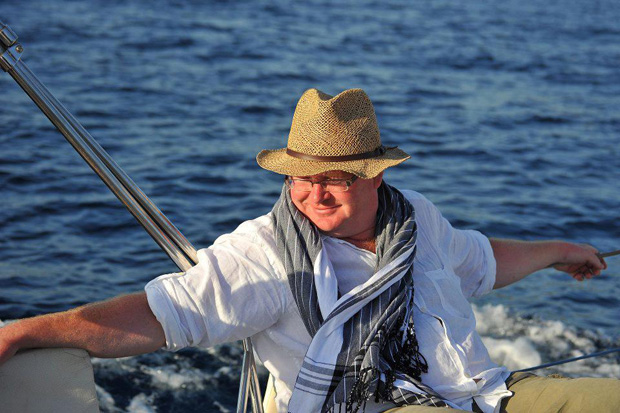 Like any parent, I want the best start for my children, and there were obvious concerns about bringing up children on a tourist island such as Hvar, not least access to health care in emergency and lack of access to entertainment facilities, from basic softplay centres to more regularly organised children’s events. I need not have worried, for bringing up kids in Dalmatia is a much more wholesome experience than back home. There are several reasons for this:
Like any parent, I want the best start for my children, and there were obvious concerns about bringing up children on a tourist island such as Hvar, not least access to health care in emergency and lack of access to entertainment facilities, from basic softplay centres to more regularly organised children’s events. I need not have worried, for bringing up kids in Dalmatia is a much more wholesome experience than back home. There are several reasons for this:
SAFETY
There are few more pleasurable experiences for parents on holiday in Dalmatia than relaxing with a coffee in a pretty stone square watching the kids running around in total safety. While nowhere is unfortunately 100% safe these days, Dalmatia comes close, and the intermingling of local and international children of all ages, who strike up instant friendships despite the lack of a common language, is one of the most appreciated aspects of a holiday by many parents. Dalmatia is an exceptionally child-friendly society, where older kids look out for the younger, and where the network of extended family means that children not only feel safe, but are so. The relaxed approach rubs off on visiting parents, allowing them to enjoy precious moments alone.
NATURE
Coming from a large city like Manchester, I am a little envious of my kids’ natural bond with Mother Earth. No Play Stations here, one of their favourite activities is helping Grandpa in the family field, be it the annual family olive harvest or helping plant potatoes. Respect for nature and an affinity with the treasures of the soil (and sea) is a part of the way of life. It may be a long way to Disneyland from Hvar, but the level of organised activities for children - most of which are within walking distance - provide a healthy, more stimulating start to life. The life of a six year-old includes horse riding, rowing club, ballet classes, chess club and weekly art classes in a delightful art studio in a nearby village, as well as those visits to the field.
SWIMMING
The biggest gift of all, and the cause of a little more paternal envy - the Adriatic. Having learned to swim at the age of 29, I look on with joy as my two little dolphins followed in their mother’s footsteps to become accomplished swimmers at the age of three. The daily routine from June to September includes an afternoon at the beach, a chance to strengthen swimming skills, as well as to commune with that all- pervasive friend, Nature. Ironically, one of the biggest concerns - emergency health care - also seems to work more efficiently than back home. A sudden illness resulted in the medical decision to transfer my daughter to hospital in Split, a feat accomplished in just 30 minutes by helicopter. Of course there are many advantages to bringing up children in other societies, but for a safe and natural start to life, there can be few better options than Dalmatia. I will report back in ten years when the girls are complaining about the nightlife options in January...
Write: Paul Bradbury
Experience the winter fairytale in Zagreb County
DECEMBER IN ZAGREB COUNTY
In the month of December, Zagreb County enchants both its residents and visitors with its beauty and unique atmosphere. But in addition to its winter charm, Zagreb County offers a rich and eventful Advent program.
[nivo effect="fade" directionNav="button" controlNav="true" width="600px" height="360px"]
[image]http://hotspots.net.hr/wp-content/uploads/2013/12/IMG_9937.jpg[/image]
[image]http://hotspots.net.hr/wp-content/uploads/2013/12/slika-4.jpg[/image]
[image]http://hotspots.net.hr/wp-content/uploads/2013/12/slika-3.jpg[/image]
[image]http://hotspots.net.hr/wp-content/uploads/2013/12/slika-2.jpg[/image]
[image]http://hotspots.net.hr/wp-content/uploads/2013/12/naslovna.jpg[/image]
[image]http://hotspots.net.hr/wp-content/uploads/2013/12/0001.jpg[/image]
[/nivo]
Explore and treat yourself with a short trip to one of the amazing cities of Zagreb surroundings in the very heart of winter. Discover and experience the green gem - Zagreb County!
Visit Advent fairs in our cities and municipalities and enjoy the magical Christmas atmosphere with plenty of good cheer (www.tzzz.hr/dogadjanja).
For those looking for culture and tradition, there is a varied cultural program - gala concerts, shows and festivals of entertaining and humanitarian character and various exhibitions.
Surprise your little ones because we provide them too with a bit of Christmas magic through occasional performances on the Day of St. Nicholas, winter and Christmas workshops for children and adults, skating schools and Christmas stories.
Do not miss a countdown to New Year 2014 - go and visit the main squares of our cities and municipalities: Dugo Selo, Ivanić Grad, Jastrebarsko, Krašić, Križ, Pisarovina, Samobor, Sveta Nedelja, Sveti Ivan Zelina, Vrbovec, Velika Gorica and Zaprešić, and enjoy an abundant entertainment program: outdoor live music, fireworks and a midnight waltz! (www.tzzz.hr/dogadjanja).
The choice is wide and varied, and your only task is to take warm clothes and go sightseeing in a winter fairytale!
Your Tourist Board of Zagreb County.
Learn more at www.tzzz.hr
Calendar of Christmas events
[nivo effect="fade" directionNav="button" controlNav="true" width="600px" height="360px"]
[image]http://hotspots.net.hr/wp-content/uploads/2013/12/božić.jpg[/image]
[/nivo]
Christmas - New Year's Fair
Popular little houses on the Promenade, the favourite destination for fun of numerous citizens of Split and guests open their doors on December 2 at 18.00. Everything will look the same, and they will be open till January 10, 2014. Christmas Fair will exhibit Christmas products and tree decorations, books, multimedia, designed souvernirs and gifts, gastronomic offer, information on the craft businesses and tourist boards of cities and districts. Almost every day the main Fair stage will host appropriate holiday programs. The Promenade will be the "in" place for socializing this year and during holidays as well, the organizers announce! Even you can experience and be a part of the real holiday atmossphere on the Promenade.
1.12. Sunday
Peristil
12.00am - 01.30pm
Music Youth
17th days of spiritual music 'Split sings’
6. 12. Friday
TIC – Peristil ( St. Roch church )
Exhibition
'Puppets in Croatian folk costumes with Christmas - New Year's decoration'
The exhibition opens on December 6 in the organization of the TB of the City of Split and the Association of War Invalids of the City of Split (UIRGS)
Promenade
Entertaining program
Srdelice, DNF, Sedmi vjetar, Vruća čokolada
7.12. Saturday
11.00am - 00.30pm
Promenade
Entertaining program
Srdelice, DNF, Sedmi vjetar, Vruća čokolada
13. 12. Friday
Promenade
Entertaining program
Srdelice, DNF, Sedmi vjetar, Vruća čokolada
14. 12. Saturday
11.00am - 00.30pm
Promenade
Entertaining program
Srdelice, DNF, Sedmi vjetar, Vruća čokolada
21. 12. Saturday
11.00am - 00.30pm
Promenade
Entertaining program
Srdelice, DNF, Sedmi vjetar, Vruća čokolada
24. 12. Tuesday
11.00am - 01.00pm
Prokurativa
Distribution of cod fish with the appropriate program with two acapellas
26.12. Thursday
11.00am - 00.30pm
Promenade
Brodosplit quire
06.00pm - 07.30pm
Public square
Duo Lite motiv
06.00pm - 07.30pm
Promenade
Zabavni bend More More
08.00pm
Promenade
DJ
27. 12. Friday
11.00am - 00.30pm
Promenade
Mješovita klapa Filip Dević
6.00pm - 07.30pm
Public square
Ivo Perkušić i & band
06.00pm - 07.30pm
Promenade
Salsa party - Professional dance couples
08.00pm
Promenade
DJ
28. 12. Saturday
11.00am – 00.30pm
Promenade
Mandolinski sastav Jedinstvo
06.00pm - 07.30pm
Public square
OLD ROAD ( Ivan Škvorc )
06.00pm - 07.30pm
Promenade
Repasagge
08.00pm
Promenade
DJ
30. 12. Monday
11.00am - 00.30pm
Promenade
Zumba Zumba on the Promenade - dance with us into New Year
06.00pm - 07.30pm
Public square
Kvartet Spalato
06.00pm - 07.30pm
Promenade
Split night ( klapa JEŽINAC, klapa MARJAN, Duo SOL, klapa ZVONČAC
08.00pm
Promenade
DJ
31. 12. Tuesday
11.30am - 01.00pm
Promenade
Children's New Year
New year's eve
08.00pm
- GIBONNI
- MJESNI ODBOR
-TRIBUTE TO DINO DVORNIK
Izvor: www.visitsplit.com
The first place for a Romanian film about Zagreb!
[nivo effect="fade" directionNav="button" controlNav="true" width="600px" height="360px"]
[image]http://hotspots.net.hr/wp-content/uploads/2013/12/View_from_Gric-Tomislav_Sklopan.jpg[/image]
[/nivo]
ZAGREB, A CITY BREAK
At the recently finished Baku International Tourism Film Festival, held in the capital of Azerbaijan, the Romanian film about Zagreb won the first place in the category of TV reports.
The film, titled "Zagreb, a city break" was created as a result of a study tour of the Romanian TV Channel Travel Mix, organized by the Zagreb Tourist Board. The participants were: Ms Madalina Neagoe - producer and Mr. Ion Gheorghe - cameraman. In 42 minutes the report shows all the most important attractions of Zagreb and its surroundings. It was made in July last year; it is synchronized to the English language and is available at:
http://www.youtube.com/watch?v=q9dqvzkj01s
The Zagreb Tourist Board is constantly working on the promotion of the Croatian capital. Through the cooperation with the media around the world, organization of the special promotions and participation at fairs, Zagreb was turned into one of the must-see destinations in Croatia.
Source, photo: www.zagreb-touristinfo.hr
Croatia - Mediterranean Florida for north Europeans
An exceptional potential for development of the third age tourism
AMERICAN COUNTRY FLORIDA BASES A LARGE PART OF ITS WEALTH ON THE CARE FOR TOURISTS IN GOLDEN AGES AND OF HIGH PROPERTY POSSIBILITIES. CONSIDERING EXCEPTIONAL NATURAL CHARACTERISTICS COUPLED WITH EXCELLENT TRAFFIC POSITION, CROATIA COULD BECOME ITS EUROPEAN COUNTERPART.
Experts hope for a positive trend of development of health-related tourism, for which they say, we have heaven-sent conditions. Health-related tourism is very demanding because every link in the chain of offer is equally important and requires the quality as well as the good compatibility of all its elements
Our advantages would be, with respect to other countries, competitive prices, the fantastic availability of future medical centres to the Central Europe, and the possibility of combining health contents with the sight-seeing and natural heritage.
Constructions of settlements in fewer used areas, from the Dalmatinska zagora and Lika to the Kordun and Banija, close to thermal sources and already existing medical capacities, would have a stimulating effect on the vitality of mentioned areas and the would facilitate the extension of tourist season to a whole year.
In addition, active third age tourists from foreign countries are of exceptionally high payment abilities, so it is not surprising that in this tourist branch lies the huge potential. Third age tourists are in search of prevention and pleasure in warmer regions or even of the therapies and particular medical interventions. If we seriously start to deal with investing in this tourist branch and follow shinny examples of foreign practice, the success is guaranteed.
[nivo effect="fade" directionNav="button" controlNav="true" width="600px" height="360px"]
[image]http://hotspots.net.hr/wp-content/uploads/2013/11/ii.jpg[/image]
[image]http://hotspots.net.hr/wp-content/uploads/2013/11/SP2_5155.jpg[/image]
[image]http://hotspots.net.hr/wp-content/uploads/2013/11/v-grablje.jpg[/image]
[/nivo]
Favourite accomodation units for young people
HOSTELS ARE FAVOURITE ACCOMMODATION UNIT FOR YOUNG PEOPLE, ESPECIALLY FOR THE SO-CALLED BACKPACKERS, WHICH ARE GUIDED BY A PHRASE ALL MY BELONGINGS I CARRY WITH MYSELF, SO THE WHOLE LUGGAGE COMES DOWN TO ONLY ONE LARGE BACKPACK.
[nivo effect="fade" directionNav="button" controlNav="true" width="600px" height="360px"]
[image]http://hotspots.net.hr/wp-content/uploads/2013/11/chillout-zagreb.png[/image]
[image]http://hotspots.net.hr/wp-content/uploads/2013/11/goli-bosi.jpg[/image]
[/nivo]
It is not surprising that accommodation in hostels has developed into a large trend among young people – prices are ever so much affordable than in hotels, while the atmosphere is more relaxed and more favourable for socialising and sharing experiences.
Hostel as an accommodation unit means renting of bed along with sharing joint bathroom, kitchen and the living room.
This aspect of tourism very much suites the guests of younger population and of ‘shallower pocket’– you can get a bed in a hostel by a very affordable price, which is about ten euros.
Croatian hostels get very high marks which refer to comfort, hygiene and other parts of service. The creativeness is also at price – young people do not appreciate mere bedrooms, but imaginatively and interestingly designed area.
Many of our hostels often find themselves on the top of the charts of the most prestigious foreign media, such as British The Guardian, CNN TV- network and the famous New York Times!
Among them is Goli i Bosi (The Naked & the Barefoot) in Split, previously second best in the whole world due to the excellent imaginative futuristic design.
Indigo at the core of the old town centre in Šibenik and Chillout in Zagreb, which with its lively colours reminds of the scenery of some Almodovar's film, have also been praised. Tckhaikovsy and Silver Central Hostel in Split, Buzz Backpakers in Zagreb and Green Lizard on the island of Hvar also got great reviews.

